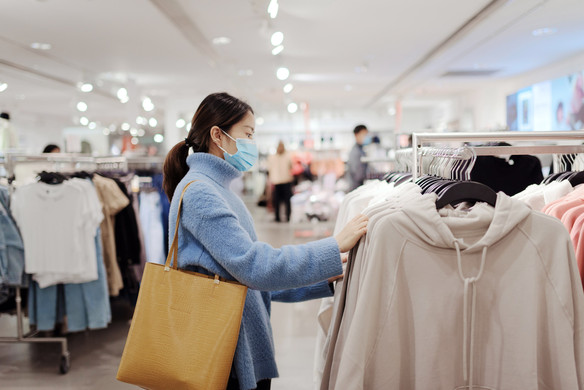Table of contents
This article was written by Daphne Howland from Retail Dive
Summertime was a bust in a lot of ways this year. While consumers took advantage of better weather to find ways to enjoy life, dine out, and even shop after mass closures in the spring, a lot of opportunities for travel and entertainment were closed to them.
That could be a boon to retailers this holiday season. Despite plenty of anxiety around the ongoing pandemic — which has been resurging in many parts of the country — and the bite it’s taken out of the economy, that low-key summer has left some extra money in many people’s bank accounts.
Yet uncertainty prevails as the holidays arrive. A $3 trillion stimulus package in the spring protected many businesses and consumers, and helped fuel demand for several months. But as of press time Congress hadn’t agreed on another one, which many analysts and economists deem necessary to stave off a more serious economic crisis.
The pandemic continues to define daily life, shape the economy, and color consumers’ outlook, so it will inevitably make its mark on the holidays this year.
“Consumer mood will be very different this holiday season,” Thomai Serdari, professor of luxury marketing and branding at New York University’s Stern School of Business, said by email.
Click (not brick)
Retailers deemed nonessential in the second quarter sustained heavy fiscal blows as their stores were forced shut and demand for products in several categories fell to a trickle. What many have learned since reopening is that shoppers remain wary of going into stores or malls.
That has robbed this season of what is usually one of the best venues for holiday cheer — brick-and-mortar stores — but stands to bring in a lot more online sales. Adobe Analytics predicts that U.S. holiday eCommerce will rise 33% year over year to $189 billion, the equivalent of two years’ growth. EMarketer even sees eCommerce offsetting brick-and-mortar sales declines in November and December, forecasting a 35.8% or ($50.2 billion) increase to $190.5 billion in eCommerce, a 4.7% decrease in-store sales to $822.8 billion, and 0.9% growth overall to about $1 trillion.
“This holiday season will see a continuation of the channel-shift to eCommerce, as shoppers look to avoid crowds and minimize their number of in-person shopping trips,” Andrew Lipsman, eMarketer principal analyst at Insider Intelligence, said in a statement.
The ensuing volume of packages could lead to what he calls “shippageddon,” including various fulfillment snafus like late deliveries. “We believe that shoppers will pull forward more of their purchases than they typically do and shift eCommerce buying to click-and-collect orders over the last 10 days of the season to prevent these scenarios,” he said.
Indeed, several retailers, even mom and pops, are instituting or expanding curbside pickup and BOPIS services. But some customers are also looking to such options to avoid shipping fees, according to the NPD Group.
“Consumers plan to do more of their holiday shopping online this year, and this includes shipping gifts to family and friends with whom they won’t be able to celebrate in person this year,” Marshal Cohen, NPD’s chief industry advisor, retail, said in a statement. “The addition of shipping fees to all of these deliveries is a bigger financial burden on consumers than getting the best deal on the item itself.”
Worry
A quarter of consumers report feeling “stressed” about the holidays this year, citing concerns about stores being clean enough in light of the virus (20%) and their ability to afford the gifts on their list (25%), according to a YouGov poll commissioned by digital commerce solutions firm Scalefast.
While 58% of consumers say that “with the proper safety precautions” they would consider shopping in an indoor or outdoor mall, they expressed high expectations about those precautions, according to Oracle’s annual holiday survey. Some 82% want to see visible cleaning efforts; 79% want to see staff and customers wearing masks; 76% prefer reduced occupancy levels in stores; 66% of shoppers would like contactless checkout; and 39% said “a lack of social distancing would cause them to have a bad shopping experience.”
Meanwhile, although some shoppers may have extra cash leftover from a largely event-free summer, financial anxiety appears to be building ahead of the holidays. GlobalData recently recorded more bargain-hunting in the U.S. as a result of pandemic-related job loss or pay cuts.
NPD found that 57% rate the economy poorly (up 37% from last year), and 30% say they’ll spend less as a result (up from 23% last year). After some recovery in recent weeks, consumer sentiment tumbled this month, according to Wells Fargo economists and William Blair analysts. The latter found “steep increases in worry from respondents under 29 and over 60 years old,” and two-thirds of the country posting higher worry levels, especially in the Upper Central and Southeast regions, according to an Oct. 20 note.
“It has become clear that we live in ‘two Americas,’” NYU’s Serdari said. “Let’s think for a moment of all those who had been holding modestly paying jobs pre-pandemic and are now left without work and without health insurance. Previously, they would have rushed to the malls to bring cheer to their families over the holiday season. This year this is simply not possible.”
In the week before the U.S. election, the stock market took a few steep tumbles, denting wealthier consumers’ portfolios. Even those shoppers were already availing themselves of layaway and other buy now, pay later options increasingly being offered by retailers of all stripes, according to Shawn Grain Carter, professor of fashion business management at the Fashion Institute of Technology. She sees delaying payments as a trend that will continue to cross income brackets and last beyond the holidays.
“I remember in the ’60s and the ’70s, layaway was very popular for working-class customers, teenagers and people who were really living paycheck to paycheck,” she said. “Now even those consumers who have gainful employment are feeling strapped and insecure. We’re seeing homelessness rise and food insecurity rise, but even among people who might have assets, they are discussing layaway options in order to protect their cash flow.”
Comfort and joy
The pandemic will keep many away from not only stores but also the gatherings traditional during this time of year, which eliminates a lot of spending for party supplies and special occasion apparel, Serdari said.
“I think many families will shift their attention to home life this year,” she said, noting that sales of appliances, home improvement items, electronics, and cooking and gardening supplies could all benefit. “This is a way to move part of people’s savings into a capital improvement that makes the house better during the holidays but also increases property value down the line.”
Still, a recent survey from shopping rewards app Shopkick found that “apparel will take up the largest proportion of gift-givers’ budgets this year,” with 46% saying they’ll spend the most at department and apparel stores. Much of that is likely to be in the comfort zone: At the holidays, the NPD Group expects sweatshirts, sweatpants, active bottoms, sleepwear and socks to jump to 31% of U.S. apparel spending, up from 26% last year.
“So a lot of knits that offer movement, the maxi dresses, yoga wear and these voluminous shapes like caftans, that is really accelerating,” FIT’s Carter said. “Before it was to wear to someone’s pool, but people are wearing them on these Zoom calls because they’re beautiful and relaxed. Smart, soft, casual dressing, easy pieces that you can mix and match.”
Perfume is another way Carter expects people to attempt to lift their mood this year. And, finally, the anti-COVID mask — a utilitarian item that, along with social distancing, right now represents the best known way to fight the pandemic, according to scientists — could provide some holiday bling, she said. Masks have emerged as a fashion item, which helped boost sales at Gap Inc., Etsy, and elsewhere in recent weeks.
“We’re going to dress casually, we’re going to dress comfortably,” she said. “Fashion has shifted. Consumers are not wearing a suit and not putting on pumps, but they have definitely shifted to accessories like scarves and masks. You have women in particular making a statement with masks.”
This article was written by Daphne Howland from Retail Dive and was legally licensed through the Industry Dive publisher network. Please direct all licensing questions to [email protected].
![]()











